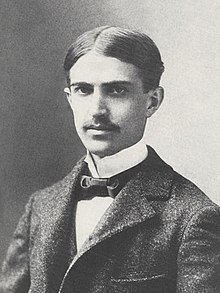In the course of English Stylistics I’ve learned lots
of interesting things. For me it was always a problem to find the difference
between an epithet and a metaphor. Now I can easily do it. Also I’ve learned
many new terms, such as simile, litotes, metonymy and so on, which help me to
better understand the stylistic devices, which are used in the text. Now I realize
that I’m not just reading the text, but receive the author’s message. And every
time I’m reading anything I start to think about what the author wanted to say
by usage of these words and by putting them in a particular order. I enjoy
reading more than ever.
Stephen Crane "A Dark Brown Dog"
суббота, 29 ноября 2014 г.
The general impression
After reading and analyzing the text, I can say that
this is a really great short story. Though the plot is quite plain and the
characters are not numerous, there are described serious themes such as friendship,
faith, cruelty and sorrow.
The narrator managed to make the reader support and worry about the child and
his little friend. I advise everyone to read this story to experience strong
emotions and learn the importance of the life of living creatures, not only
human beings.

The expressive means and stylistic devices in the story
 The narrator
uses a number of stylistic devices to underline some details, to make them more
expressive and in such a way to influence the reader. The first thing which
rises above everything is the numerous usages of periphrasis (the
child grew weary; the retreating form; his captive; the head of the family etc.). It makes the text
sound literary, like a wonderful piece of art. And it makes all the
descriptions more vivid.
The narrator
uses a number of stylistic devices to underline some details, to make them more
expressive and in such a way to influence the reader. The first thing which
rises above everything is the numerous usages of periphrasis (the
child grew weary; the retreating form; his captive; the head of the family etc.). It makes the text
sound literary, like a wonderful piece of art. And it makes all the
descriptions more vivid.
The same effect
has the usage of simile (like an assassin; like a scorched plant; like a
calling voice; like a knight). Due to this it is easier to imagine things.
The very
first word in the story is a Child
(the case of graphon), which makes a reader to be confused: to think about it
as about a proper name or a common noun? Later on it becomes clear that the
narrator in such a way wanted to draw reader’s attention to the fact that the
main character is a typical child with all peculiar features of behavior.
Of course,
to make the story more bright there were used epithets (grave
crime; grim unknown; infernal kid; distressed head) and metaphors (wounded
him to the heart; had a battle; was a kingdom).
The dog in the story is perceived as a human being due
to the usage of personification (he trod;
he pleaded) and allusion (the
interview; a small prayer).
The usage of detached constructions (to keep him so; in his sleep; lacking skill
in such matters; one step at a time) draws reader’s attention to small but
still important details.
The characters in the story
The dog is
also characterized as a typical representative of his species. He is
vulnerable, faithful, skilful and smart. Due to all these characteristics a
reader starts to like this kind little creature, which lives in a cruel world.
The plot of the story
The plot of
the story is rather simple. There are two main characters: a child and a little
dark-brown dog. They’ve met on the street and the dog followed the child to his
home. The latter decided to take the little creature home. In such a way they
became friends. The child defended his friend from other members of the family,
who were trying to harm the dog all the time. Once the father of the family was
drunk and threw the dog out of the window. The very last sentence describes how
the child was sitting by the body of his dark-brown friend. That’s all.
пятница, 10 октября 2014 г.
The setting of the story
In fact there are quite few
descriptions of the settings in the text. At the beginning of the story we see
that the main character a child stands on the street near "a high board-fence". Then the
narrator describes the meeting of a dog and the child, but not the word about
the look of the street. So the reader can imagine any type of street he likes.
Then there were couple of words about the
house of the child "In a small room containing a stove, a table, a bureau
and some chairs". This description shows the small, grey,
uninteresting room. It seems like there is nothing more to say about the room in
particular and the child’s house as a whole. From the story we also can found
out that the family lives in a multifamily house of at least five floors. "The end" of the setting's description.
Such poor description of the places in the
story draws the reader’s intention to the actions and feelings. It seems that for
the narrator the place is really unimportant and meaningless. Thanks to this
the reader doesn’t digress from the characters and their feelings and emotions,
what makes this story sensible.
среда, 8 октября 2014 г.
Stephen Crane
Stephen Crane (November 1, 1871 – June 5, 1900) was an American author. He wrote notable works in the Realist tradition as well as early examples of American Naturalism and Impressionism. He is recognized by modern critics as one of the most innovative writers of his generation.
The eighth surviving child of Protestant Methodist parents, Crane began writing at the age of four and had published several articles by the age of 16. Having little interest in university studies, he left college in 1891 to work as a reporter and writer. Crane's first novel was the 1893 Bowery tale “Maggie: A Girl of the Streets”, generally considered by critics to be the first work of American literary Naturalism. He won international acclaim in 1895 for his Civil War novel “The Red Badge of Courage”, which he wrote without having any battle experience. Plagued by financial difficulties and ill health, Crane died of tuberculosis in a Black Forest sanatorium in Germany at the age of 28.
Stephen Crane's fiction is typically categorized as representative of Naturalism, American realism, Impressionism or a mixture of the three. Crane's work, however, cannot be determined by style solely on chronology. Not only does his fiction not take place in any particular region with similar characters, but it varies from serious in tone to reportorial writing and light fiction. The novels and short stories contain poetic characteristics such as shorthand prose, suggestibility, shifts in perspective and ellipses between and within sentences. Similarly, omission plays a large part in Crane's work; the names of his protagonists are not commonly used and sometimes they are not named at all.
Crane is also known for his poetry, journalism, and short stories such as "The Open Boat", "The Blue Hotel", "The Bride Comes to Yellow Sky", and “The Monster”.
The eighth surviving child of Protestant Methodist parents, Crane began writing at the age of four and had published several articles by the age of 16. Having little interest in university studies, he left college in 1891 to work as a reporter and writer. Crane's first novel was the 1893 Bowery tale “Maggie: A Girl of the Streets”, generally considered by critics to be the first work of American literary Naturalism. He won international acclaim in 1895 for his Civil War novel “The Red Badge of Courage”, which he wrote without having any battle experience. Plagued by financial difficulties and ill health, Crane died of tuberculosis in a Black Forest sanatorium in Germany at the age of 28.
Stephen Crane's fiction is typically categorized as representative of Naturalism, American realism, Impressionism or a mixture of the three. Crane's work, however, cannot be determined by style solely on chronology. Not only does his fiction not take place in any particular region with similar characters, but it varies from serious in tone to reportorial writing and light fiction. The novels and short stories contain poetic characteristics such as shorthand prose, suggestibility, shifts in perspective and ellipses between and within sentences. Similarly, omission plays a large part in Crane's work; the names of his protagonists are not commonly used and sometimes they are not named at all.
Crane is also known for his poetry, journalism, and short stories such as "The Open Boat", "The Blue Hotel", "The Bride Comes to Yellow Sky", and “The Monster”.
Подписаться на:
Сообщения (Atom)



